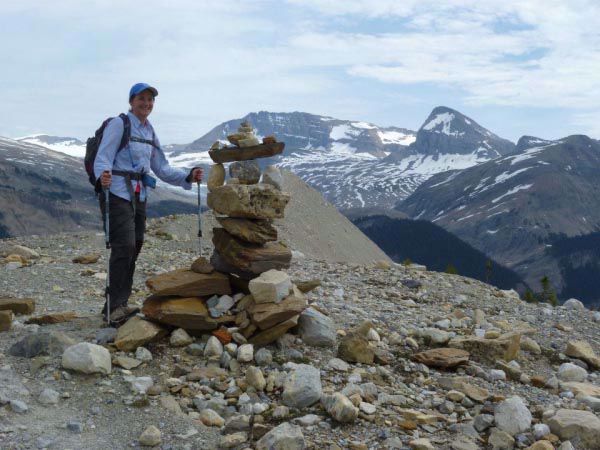If you’ve hiked a trail or two – along the way you may have seen a pile of rocks stacked in the form of a tower. Some hikers may admire stone sculpture like a work of art and assuming it was crafted by a wandering hiker. And while the stack may be a result of a creative hiker with an aesthetic eye – it’s possible that the tower serves another purpose. Referred to as a “cairn,” this man-made pile (or stack of stones) are found all over the world in uplands, on moorland, on mountaintops, near waterways and on sea cliffs, and also in barren desert and tundra areas. They vary in size from small stone markers to entire artificial hills, and in complexity from loose, conical rock piles to delicately balanced sculptures and elaborate feats of megalithic engineering.
Today, cairns are built for many purposes. The most common use in North America and Northern Europe is to mark mountain bike and hiking trails and other cross-country trail blazing, especially in mountain regions at or above the tree line. Placed at regular intervals, a series of cairns can be used to indicate a path across stony or barren terrain, even across glaciers. Such cairns are often placed at junctions or in places where the trail direction is not obvious, and may also be used to indicate an obscured danger, such as a sudden drop, or a noteworthy point such as the summit of a mountain. Most trail cairns are small, a foot or less in height, but may be built taller so as to protrude through a layer of snow. Hikers passing by often add a stone, as a small bit of maintenance to counteract the erosive effects of severe weather. North American trail marks are sometimes called "ducks" or "duckies", because they sometimes have a "beak" pointing in the direction of the route. The expression "two rocks do not make a duck" reminds hikers that just one rock resting upon another could be the result of accident or nature rather than intentional trail marking.
So, the next time you are hiking and you see three or more rocks stacked on top of one another – appreciate the rocky masterpiece and then notice that it is likely a sign post passively catching your attention. Heed its guidance and acknowledge the international trail marker courtesy of Mother Nature and outdoor adventurers.



